Exercise would not have to be difficult. You can stay a more healthy existence by using doing some thing as simple as going for a regular brisk stroll.
For example, you can advantage from habitual brisk strolling through
Keep a wholesome weight and reduce body fat Prevent or treat a number of ailments, consisting of kind 2 diabetes, cancer, high blood pressure, and coronary heart sickness. Boost cardiovascular fitness Build up your muscle tissue and bones. amplify your muscle patience Boost your power stages Enhance your mood, questioning, memory, and sleep Improve your coordination and balance Improve immune system Reduce anxiety and stress The advantages increase if you stroll quicker, in addition, and extra regularly. For instance, you may begin as a mean walker and steadily increase your pace till you may, like electricity walkers, cowl a mile in much less time than a median walker. This may be a brilliant manner to get a few cardio workout, improve your coronary heart, and construct patience all even as burning energy.
You can alternate among brisk and leisurely strolling. Numerous advantages of this form of interval training include accelerated calorie burn and progressed cardiovascular health.
Think about your method
To transform your normal stroll right into a stride for fitness, you want right posture and planned actions. Ideally, you will appear as follows while you're walking : - You are looking up. Not at the ground, but forward, you are looking at.
Your shoulders, back, and neck are all comfortable and no longer rigidly upright. Your elbows are slightly bowed as you freely swing your hands. It's proper to pump your hands a little. Your returned is straight and not arched forward or backward, and your abdominal muscle tissues are mildly shriveled. Smoothly sliding your foot from heel to toe, you walk. Make a routine plan
As you begin your each day on foot ordinary, keep in thoughts : -Purchase the proper equipment. To defend your feet from shock and offer correct arch support, choose shoes with a solid heel and thick, bendy bottoms.
Wear unfastened-becoming, cushty garb and weather appropriate device, including layers in cooler situations. Wearing garb that wicks away moisture will maintain you greater comfortable. If you stroll outdoor after dark, be visible by way of donning vibrant apparel or reflective tape. If you are going outside throughout the day, use sunscreen, a hat, and sunglasses. Some parents determine to make use of a pedometer, app, or activity tracker. To hold track of a while, distance, heart charge, and calories, those can be useful. Pick your path cautiously. Avoid paths with choppy turf, low-putting limbs, broken sidewalks, and potholes if you plan to stroll out of doors. Consider walking in a mall that has open hours for walkers if the climate is not suitable for it. Get warm, For 5 to 10 mins, take a gradual walk to heat up your muscle tissues and get your frame equipped for exercise. Become calm, For 5 to 10 mins after you finish your walk, walk slowly to assist your muscular tissues calm down. Stretch your muscular tissues gently as soon as you have finished cooling off. Remember to warm up before you walk in case you would choose to stretch first. Set practical goals
The Department of Health and Human Services shows the following exercising tips for almost all of healthy adults : -Aerobic exercising,Get 75 minutes of energetic cardio workout, 150 mins of moderate aerobic exercise, or a aggregate of the 2 each week. The instructions recommend spreading out this interest over the route of every week. Even greater interest may have a tremendous impact on your health. But even a touch bit of exercising is useful. Short bursts of activity spread for the duration of the day can add as much as high quality fitness outcomes.
Exercising your muscular tissues. At least two times a week, carry out strength training sports for all of the major muscle groups. Do each exercising for just one set. Aim for at least 30 minutes of bodily interest every day as a standard purpose. If you are not able to allot a lot time, strive spreading out your activities over more than one brief intervals of time. Anything you do is most desirable to doing not anything in any respect. Even tiny ranges of bodily interest are beneficial, and daily activity accumulation has a effective effect on health. Just preserve in thoughts that it's ok to start out slowly, specifically if you have not been workout often. The first week, you may commit to five minutes each day, and the subsequent weeks, you can upload 5 mins for your commitment till you have at the least half-hour.Aim for at the least 60 mins of physical pastime most days of the week for even extra health blessings. Follow your development
You can see in which you started and get thought via retaining track of what number of steps you are taking, how a ways you walk, and how lengthy it takes. Imagine how satisfied you may be while you discover what number of miles you have got included each week, month, and year.
To compute steps and distance, try using a pedometer, an app, or an activity tracker. Alternately, include these figures in a strolling magazine.
Stay stimulated
A strolling application ought to be initiated. It requires dedication to stay with it. Maintaining motivation : -
Make preparations to be triumphant. Begin through setting a truthful goal, together with, I will pass for a 5 or 10 minutes stroll all through my lunch ruin. Set a brand new objective, inclusive of I will stroll for 20 minutes after paintings, once your 5 or 10 minutes walk will become ordinary.
Set apart time for walks. You could soon be able to perform objectives that after appeared insurmountable.
Make the journey exciting. Ask a chum or neighbor to come back in conjunction with you in case you do not like to stroll alone. Join a gym or taking walks institution in case you get your energy from companies. While strolling, you would possibly revel in paying attention to music.
Change up your ordinary. Plan several exceptional routes in case you stroll outside for range. If you frequently walk for your community, maybe about exploring a brand new region, this kind of city or nation park. As you get greater conversant in strolling, try taking routes that consist of hills or stairwells. Alternately, walk greater quickly for a short while, then extra slowly. Then, repeat the system. Tell a person in which you are going, in case you are on foot alone. Walk in areas which can be properly lit and safe.



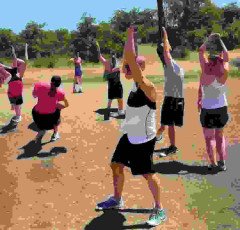

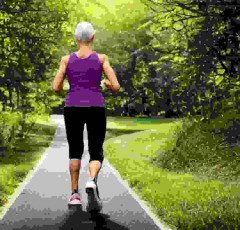








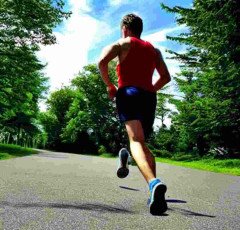


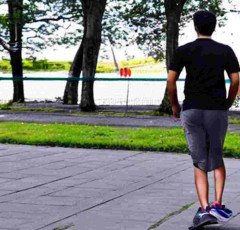











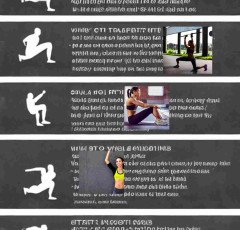




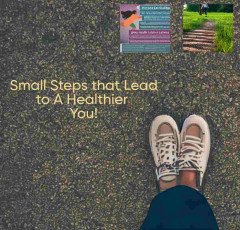






















































 Creative Brief For Video Shoot
Creative Brief For Video Shoot  Wristbands
Wristbands  RPM 3.0
RPM 3.0  Rakhi
Rakhi  SOFAS
SOFAS  LCD Writing Tablet
LCD Writing Tablet  Smart Watches
Smart Watches  The Click Engine
The Click Engine  Crocs
Crocs  Digital Voice Recorder
Digital Voice Recorder  Hot Bags For Pain Relief
Hot Bags For Pain Relief  Samsung Mobile
Samsung Mobile  Acer Laptop
Acer Laptop  NordPass
NordPass  Dell Laptop
Dell Laptop  ASPINAL LONDON
ASPINAL LONDON  Top Rated From Amazon
Top Rated From Amazon  NordLocker
NordLocker  Duke T Shirts
Duke T Shirts  Echo Dot - Smart speaker with Alexa
Echo Dot - Smart speaker with Alexa  ELECTRONIC ACCESSORIES
ELECTRONIC ACCESSORIES  The Secret Email System
The Secret Email System  Hanging Lights For Living Room
Hanging Lights For Living Room  Air Purifier for Home
Air Purifier for Home  Sennheiser
Sennheiser  Best Home Appliances
Best Home Appliances  Amazon Best Selling Products
Amazon Best Selling Products  Realme Smart Phone
Realme Smart Phone  Pet Care Products
Pet Care Products  Women Fashion
Women Fashion  4k Projector For Home
4k Projector For Home  Men Clothing
Men Clothing  Artificial Intelligence
Artificial Intelligence  Stylish Sneakers by Red Tape
Stylish Sneakers by Red Tape  Online Marketing
Online Marketing  HP Laptop
HP Laptop  Bathroom Mirrors
Bathroom Mirrors  BEST SELLER TOP10
BEST SELLER TOP10  Best Robotic Vacuum Cleaners
Best Robotic Vacuum Cleaners  Apple iPhone
Apple iPhone  1150+Trendy kids coloring pages Bundle
1150+Trendy kids coloring pages Bundle  Smart Doorbell
Smart Doorbell  Favorite Company (Cuelinks)
Favorite Company (Cuelinks)  Online Technology Classes
Online Technology Classes  Wireless Bluetooth Earphones
Wireless Bluetooth Earphones  SEO Checklist
SEO Checklist  Door Handle Collection
Door Handle Collection  Unreal Engine 5 For Beginners Learn The Basics Of Virtual Production
Unreal Engine 5 For Beginners Learn The Basics Of Virtual Production  Prime Video
Prime Video  TitTok Revolution
TitTok Revolution  ASUS Laptop
ASUS Laptop  Motion Sensor Light
Motion Sensor Light  Hello Theme
Hello Theme  iPhone cable
iPhone cable  Kitchen Tap
Kitchen Tap  Graphics & Design
Graphics & Design  Best Selling Books
Best Selling Books  One World Collection
One World Collection  NordVPN
NordVPN  Adidas Shoes
Adidas Shoes  Dual USB Car Charger
Dual USB Car Charger  Only For The United States
Only For The United States  Kitchen Daily Use
Kitchen Daily Use  Wall Lamp
Wall Lamp  Best Sellers On Amazon
Best Sellers On Amazon  Puma (Clothing & Accessories)
Puma (Clothing & Accessories)  Home Decor Items
Home Decor Items  Best Phone
Best Phone  Healthy Ingredients
Healthy Ingredients  Wireless Gaming Mouse
Wireless Gaming Mouse  Essentials for Gamers
Essentials for Gamers  All Wireless Products
All Wireless Products  Unlimited access to classes on illustration, photography, design, film, music
Unlimited access to classes on illustration, photography, design, film, music 


















